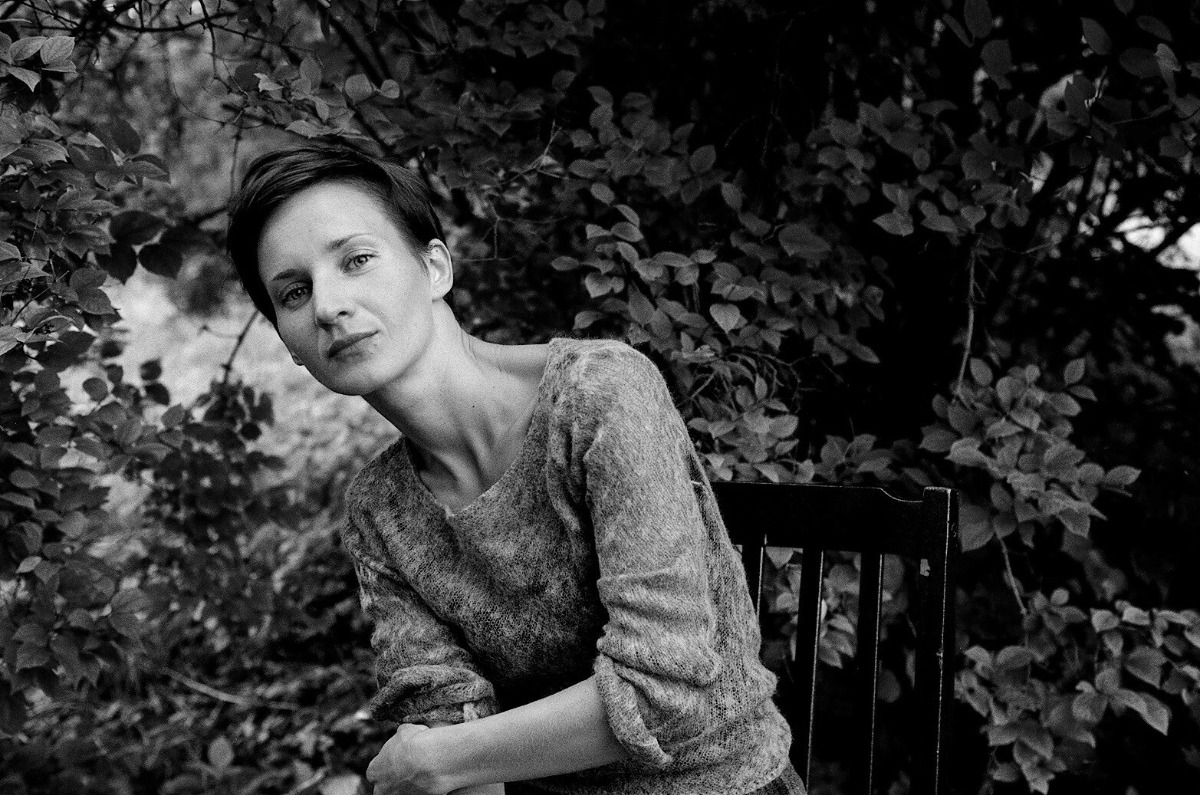
The Organ Storing Joy of Life
A conversation with Evelīna Deičmane / shortlisted for the Purvītis Prize 2023
Evelīna Deičmane’s body of work that sees the artist ponder the internal catalysts of the external expressions of human existence on a wide multimedia scope has been repeatedly recognised as a significant event on the Latvian visual art scene.In 2019, the Purvītis Prize panel of experts nominated the artist for her ‘Alone Together’ exhibition at Alma Gallery, a joint project with the Hungarian-American musician André Vida. Her ‘Dance Organ / Tanzorgan’ show, previously on view at the Kim? Contemporary Art Centre is now shortlisted for the 2023 Purvītis Prize. The exhibition explores the internal processes of human life and the impact left by Traumatic historical events. Deičmane’s skill at creating an intimate and absorbing space of existential experience and the therapeutic nature of the show have been cited as the grounds for the nomination.
The artist spends her everyday life between Riga and Berlin and does not hesitate to admit that her works are also created under similarly peripatetic conditions: ‘I do not own a studio and I also do not have a sense of a permanent home. I work anywhere. Including a table that will later need to be vacated for serving supper. I store and transport my works in my old Volvo – always on the road, always in a permanent limbo, yearning to have a studio of my own.’ The artist admits that this may be the reason why she feels she sometimes fails to achieve the cohesiveness that she strives for. In her creative effort to achieve integrity of her artwork, Evelīna focuses on the main mission of art: leaving an indelible impression on the viewer’s soul. An elating, not depressing one as far as it is possible. She keeps it in mind no matter what she is doing – having a conversation, creating art or designing a stage costume. Speaking of the latter, the artist says: ‘I want to uplift and inspire not just the actor but also the seamstress. Just like they uplift and inspire me.’ The Purvītis Prize-nominated ‘Dance Organ / Tanzorgan’ exhibition is also permeated by the idea of making a deliberate choice of attitude – preserving humanity and fostering empathy.
Evelīna Deičmane. Tanzorgan. Exhibition views at the Kim? Contemporary Art Centre, Riga, 2022. Photo: Ansis Starks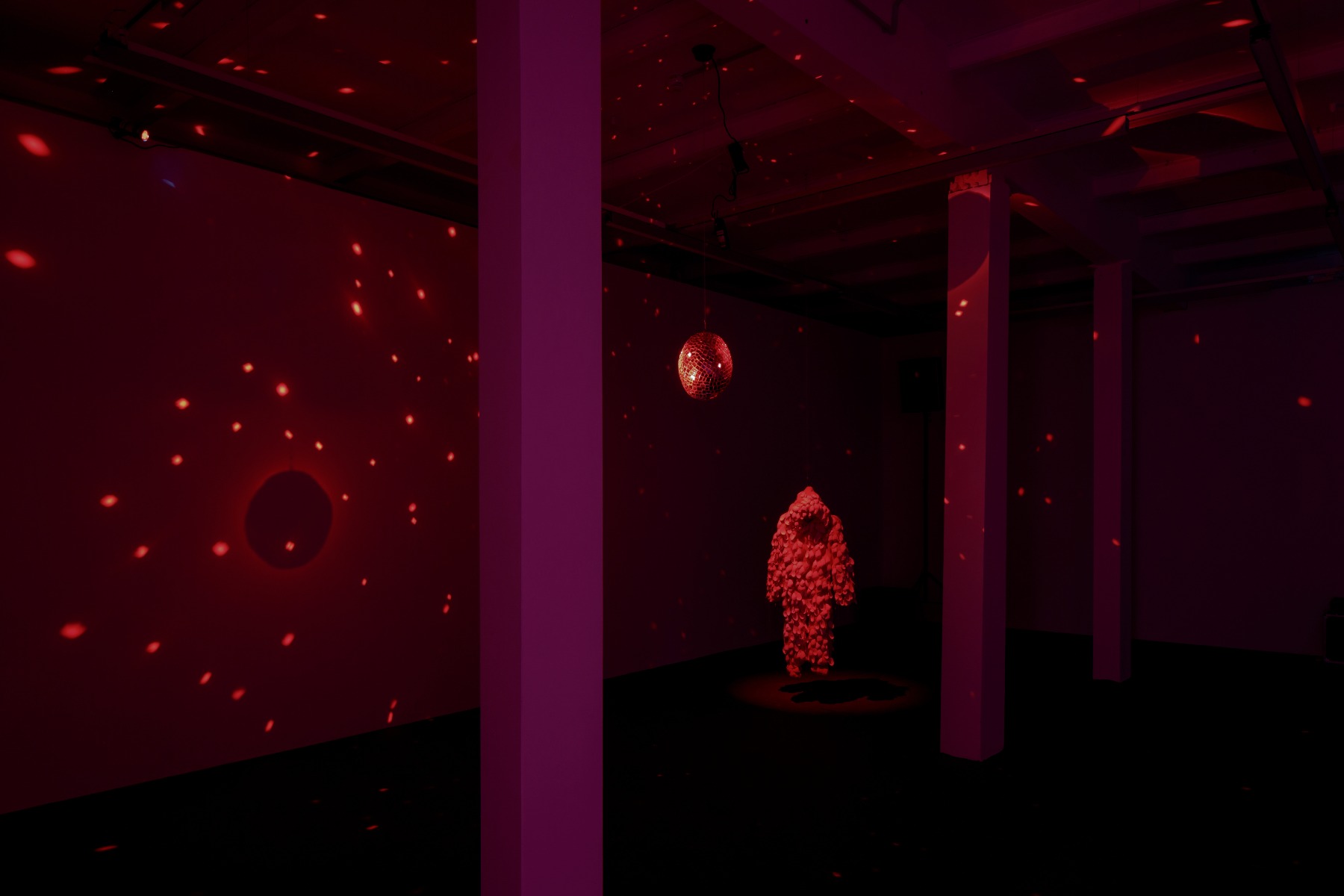
What does the title of the exhibition really mean?
It is a word I made up, a combination of ‘dance’ and ‘organ’. The German version would be Tanzorgan, and I personally prefer it. Germans have always been great at creating compounds of words (and, consequently, sensations and thoughts). By introducing this compound, I purportedly invented a new organ of the human body, one that stores joy of life and makes you dance. I focus particularly on the inner body that allows you to attain that level, that unique state where the world and the invisible realm merge into one.
The exhibition is based on your interest in exploring the art of living/surviving. The conditions of survival are informed by the individual’s specific geopolitical and social reality, their specific state of health and physical wellbeing, as well as other factors. What is your interpretation of the notion of living/survival?
Before creating anything visual at all, I spend several years doing research. It is always more of a marathon than it is a sprint. The initial impulse is a sprout of interest, and I let it grow and spread in every possible direction. In this case, my personal experience was also added to the mix.
A significant influence in the context of this exhibition was Viktor Frankl’s ‘Man’s Search for Meaning’, where he describes his experience as an inmate at a concentration camp. After that, I moved on to Bessel van der Kolk’s ‘The Body Keeps the Score’, a book on the post-traumatic stress disorder. The theoretical part was followed, bluntly speaking, by a practical stage in my research. The Covid-19 pandemic broke out, and I fell seriously ill. In my case it was genuinely a life-and-death fight. I did not want to unpack all of this directly in the exhibition, and so I went back to what were my first steps toward getting to grips with my own survival.
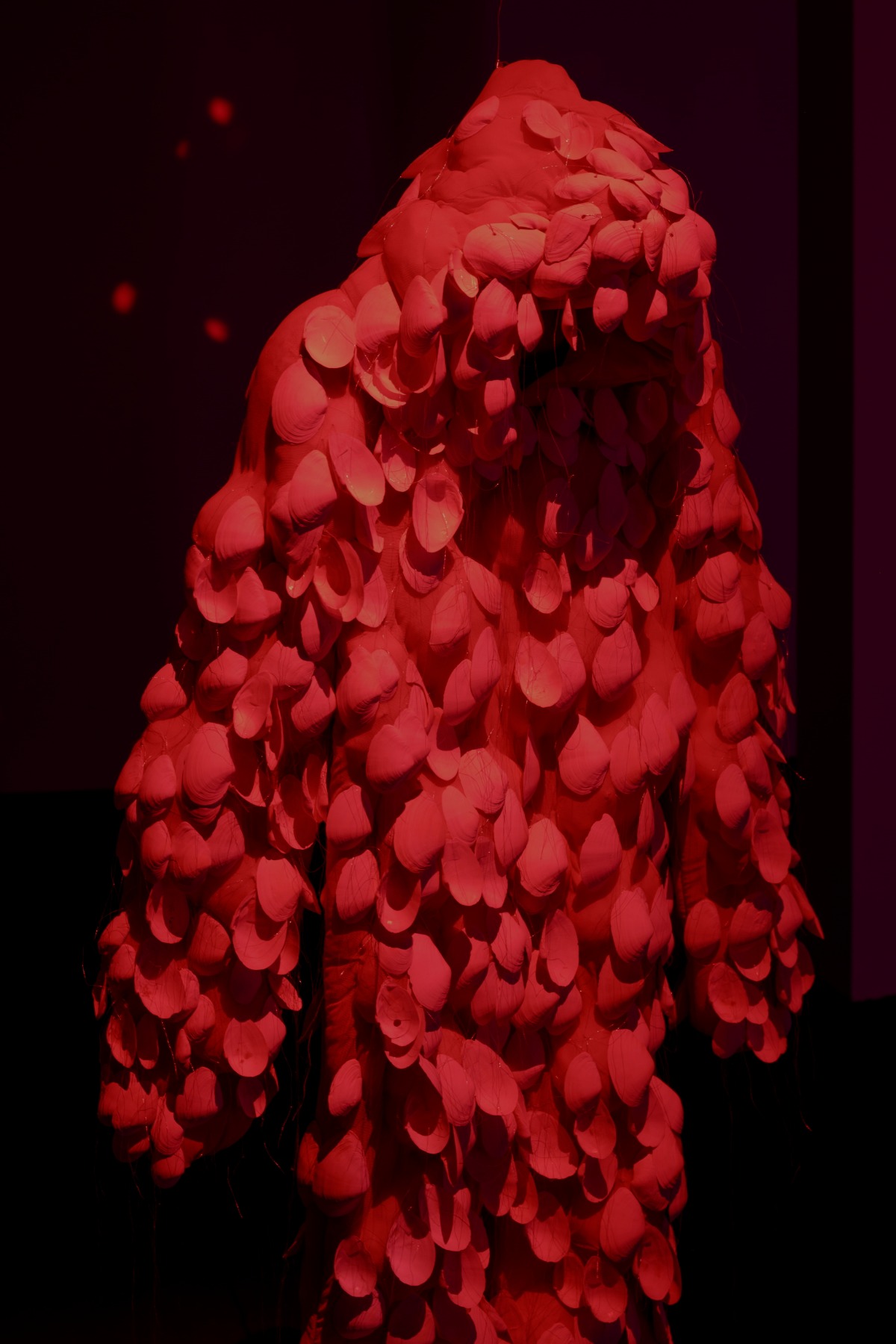
When did your own survival start?
I suppose it was at some point between the ages of 10 and 14, when I first started venturing outside my yard on my own. This time coincided with the great transformations brought by the late 1980s and early 1990s. To try and understand the behaviour of people back then, we could, of course, delve into the political context of the time; as a teenager, I knew next to nothing about it. I just witnessed the manifestations. Psychologically it is an age when Kashchey the Immortal from the cartoon seems fictional for the simple reason that he is a drawing, whereas the main character of the ‘Superman’ film is real, and he is the strongest person in the world. A sense of reality has not crystallized yet. I still find this state of perception very appealing.
Everybody would probably agree that it was a time of multiple layers. For someone living in a small village the reality was frequently very harsh. Besides, children do not normally hide things, so it was quite easy to guess what was going on behind closed doors in the homes of your classmates. It has provided me with lots of incredible material. And who knows how much of that was the truth and how much was imagination.
The time was largely permeated by a sense of helplessness and lack of any say. There was, of course, the option of flying to the Moon on a cannonball like Munchausen.

Which are the most significant observations or material used by you in this exhibition?
On the one hand, there is this fantasy, fairy tales and miracles in the exhibition, which are things that are very genuine and real for children of that age. In visual terms, the exhibition is colourful, cheerful and has a happy ending. On the other hand, I speak about violence against children, peer violence, the indifference of grownups, and peers pretending not to see the things that are going on (which stems from fear of getting involved or knowing more than you should – a fear instilled back in the Soviet years).
One of the works in the show features recordings of fairy tales, math problems and horror stories – real events. Sometimes the texts are deliberately laconic, and it is hard to grasp the actual content immediately. For instance, Gatis and the Ten Brothers. His mum had so many of them and they were so alike that Gatis lost count and could not tell her brothers from her sons. Or another example: There was a mother who used to flog her children with a black hose. One day the hose rang the doorbell. Nobody has seen the mother ever since. But there is a black hose in the yard, and the children sometimes use it to water the garden.
Alongside rotten abuse and survival, different kind of urges also emerge in the exhibition. Colours and popular hits from the time make appearance… The musical cacophony that accompanies the visual aspect speaks about the intensity of the era while also referring to teenage violence that was frequently perpetrated at discos or behind the cover of bushes against the background of disco music (sound by Linda Leimane). There is a piece entitled ‘Mirror-Stomach’ that is reminiscent of a disco ball. It is a well-stuffed full belly – a sense of the ultimate wellbeing. At the same time, the object looks somewhat similar to a head. The room around it is filled with cheerfully flickering red corpuscles. I cannot claim any medical knowledge, but I do know that psychological problems are frequently somehow tied to matters of the stomach.
Then there are the soft cushions, painted with body parts and organs and storing untold stories and supressed emotions like lockboxes.
The exhibition does not purport to separate the evil from the good. I wanted to draw attention to things that still exist today. I wanted to point at the exigency of compassion and empathy.
Traumatic experience follows us throughout our life – until we consciously process the trauma. Viktor Frankl also writes that there is nothing in the world that can destroy a person. The truth is, nobody can actually truly harm us.

As you said, the sometimes-absurd behaviour of people was rooted in the political context of the time. What are the reasons for similar ways of selfexpression today?
Today, keeping in mind the mental map of the post-Soviet region in its entirety, we could say that alienation from their bodies is experienced by the majority of people living in Latvia, particularly the generation born in the 1950s. When you learn more about your body, you also, to an extent, explore everything that surrounds it, both the natural and social environment. If you fully accept yourself the way you are, if you respect and love your body, I think, it is pretty hard to make it get into a tractor and proceed to spray cornfields with glyphosate.
It is also possible that, along with its past, the older generation has lost its ability to shed light on the present. The present is absent: everything is viewed and evaluated through the lens of past experience, and the perception and experience of life gets distorted as a result. Not to mention their fear of change, fear of contemporary art or a museum of contemporary art.
Is there a specific way in which you as an artist observe people – their characters and their life stories?
If I listen carefully to someone speaking, without thinking simultaneously about my own response, I can read their body language that reveals unknowingly both their deepest secrets and solutions to difficult situations. I recently listened to Dostoyevsky’s ‘Notes from Underground’. Russian classic literature contains examples of reading someone’s character from, let’s say, the size of their nose or the shape of their ears. In this novella, someone complains about being a very nasty person and suffering from pain in his liver. Based on traditional Chinese medicine, you could say that there is a close link between these two things, namely, a person with pain in his or her liver is an absolutely bitter human being. I have noticed that there is so often a physiological explanation for human behaviour.
Back when I was making my ‘Season Sorrow’ video work (2009), I invited people from a village, non-professional actors, and filmed each person’s unique reaction and surprise at being buried in snow up to their ears. That was my way of telling my own personal story.
They all came to me of their own will, guided by their curiosity; I did not have to persuade anybody.

Now that the exhibition has been mounted, do you feel that something inside you has been resolved and healed, that you have found the answers you have been searching for? Or perhaps this has only been a launching pad for further exploration of the subject?
I increasingly take joy in the actual process. The creative flow is a healing force in itself. Regarding this childhood experience, survival, looking for a solution… I have come to realize that there is a huge power hidden behind these challenging moments and there is something miraculous to the whole thing. It seems that this matter is closed now. Closed as in – I can start doing something completely new, now that all of it is said and done. I don’t care much for covering myself with conceptual blankets; however, my interest in human beings runs like a thread through everything that I do. Sometimes it is about the power games that people play or about a connection with the Universe or the past; at other times, it is an anticipation of things to come, like my ‘Season Sorrow’ with the people stuck deep in snow, which was a good description of the economic crisis that broke out at the time. The symbolic meaning of the work points at the power of nature. Nature laughs at the plans that people have been making, and they are forced to wait helplessly for the spring when the snow will melt and they will be liberated.
I love emotional spectrums and strata but it also matters to me that the element of light trumps it all.
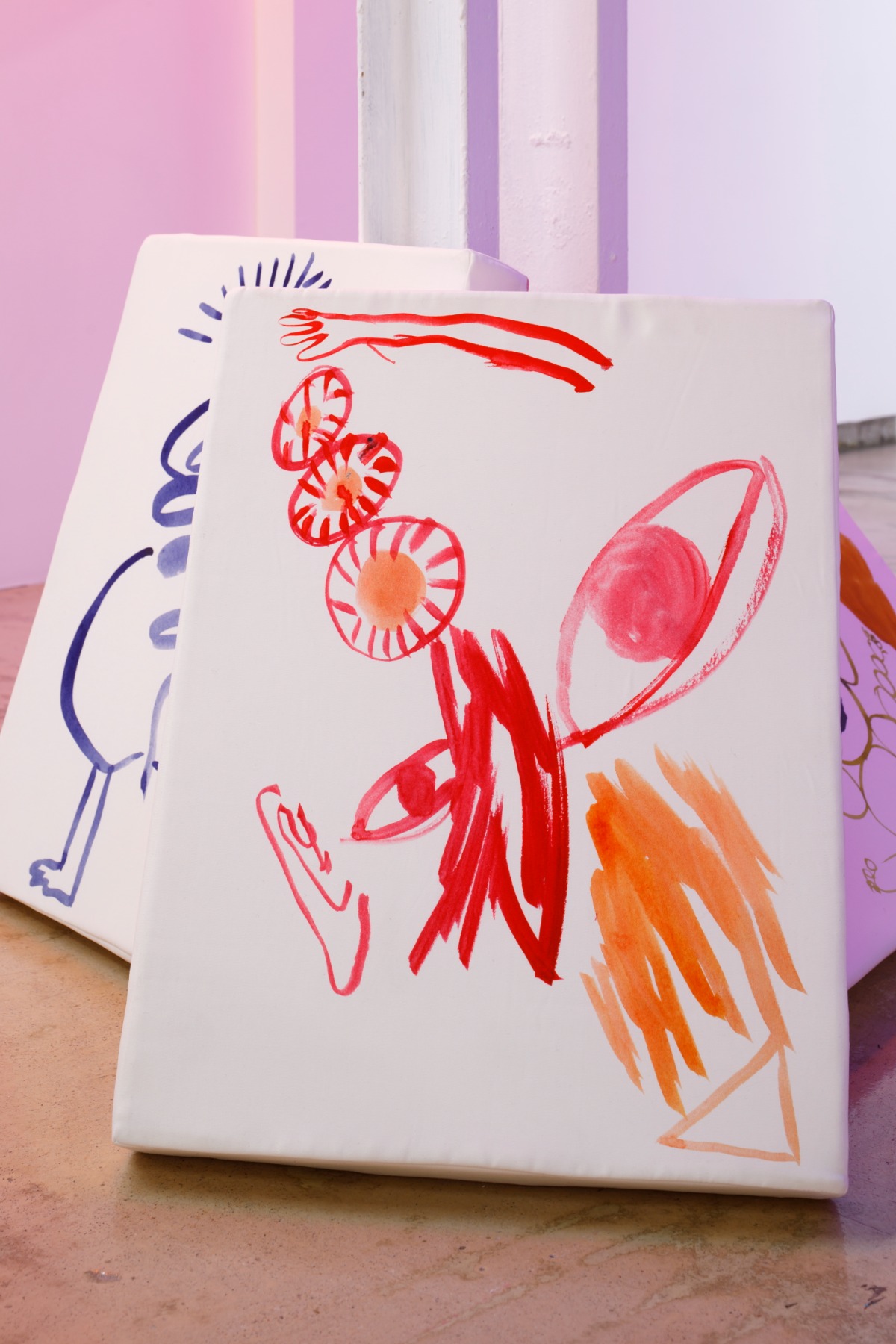
A range of various formats are represented in your exhibition (painting, sound objects, etc.). How do you match each feeling and thought that you are looking to express with the most fitting medium?
I have been very lucky: I attended both the Berlin Academy of Arts and the Art Academy of Latvia, where I had the opportunity to study under Ojārs Pētersons. He has structured his department in a way that you can do things in whichever medium and direction. And thus I have never experienced any technical limitations at all. Should I decide to work with glass and look at this material as a word that expresses my feelings and thoughts in the most accurate manner, I would definitely find a technical solution for that.
Right now, as I am speaking with you, I find it difficult to ‘catch’ the right words. They seem to disobey me, whereas the visual means of expression respond to my commands. The idea, the inspiration embodies itself, finding the right colour and shape all by itself. As often as not, it speaks through symbols. Just like you would regard a flower and see a cloud, rain and the sun in it. I have no doubt whatsoever that the Universe has given me a gift of talent. My job is tending to it, nourishing it and making it work, but I must steer clear of allowing my mind to interfere too much.

Did the exhibition mark any new efforts in terms of technical delivery? Any new challenges perhaps?
One of the challenges that has always been breathing down my neck, now more than ever, is – making the work cohesive. It can be big or small, but it has to be succinct. I hope I will not offend anyone by saying that, looking at the Latvian art scene, I detect a trend toward fragmentation. It is as if there were too many spaces between words in a written text, making it harder to read. I don’t want reading my work seem like picking mushrooms.
Perhaps this cohesiveness comes with maturity of the artist’s personality?
It could be one of the reasons, but I’m sure there is something else behind it. Including financial resources. The art market also plays a big role. It could be a multitude of things that the artist cannot change.
On the other hand, what do you think is your strength and perhaps also the strength of other Latvian artists of your generation – what makes them stand out on the general landscape of art?
The aforementioned absence of art market and financial restrictions also give you a certain licence to be unique. No-one expects anything from you. You can express yourself freely, and there is room for errors, which perhaps brings the work closer to being genius. Working under these conditions, the artist acts with great enthusiasm, which leads to honesty in the things she or he does. Consequently, these are deep and honest works of art.

An integral part of your works is the involvement of the viewer. How important is the viewer for you? Can a work of art and the artist themselves even exist without a viewer?
I have had my quiet period. There were no offers, and so I decided that I would be just fine working quietly at my own speed, going on doing what I do. But every now and then someone dropped by to check it out, and then there was this completely different level of energy exchange. Some genuine passion kicked in. I think I would not want a repetition of a lengthy quiet period in my life. I’m not one of the artists who are content to work quietly throughout their life and leave behind an attic full of paintings when they die. It matters to me that I can show my work and hear what other people think of it.
What is the reaction from the viewers that sparks genuine satisfaction in you?
It is important for me not to leave the viewer without a say in things and feeling hopeless (but anger is allowed). I don’t want people to go home feeling bitter. Art – or the act of creating – possesses a huge solution-finding power. I want people to think about things.Even now, as we speak, I care about your feelings after this conversation. It is part of my responsibility.
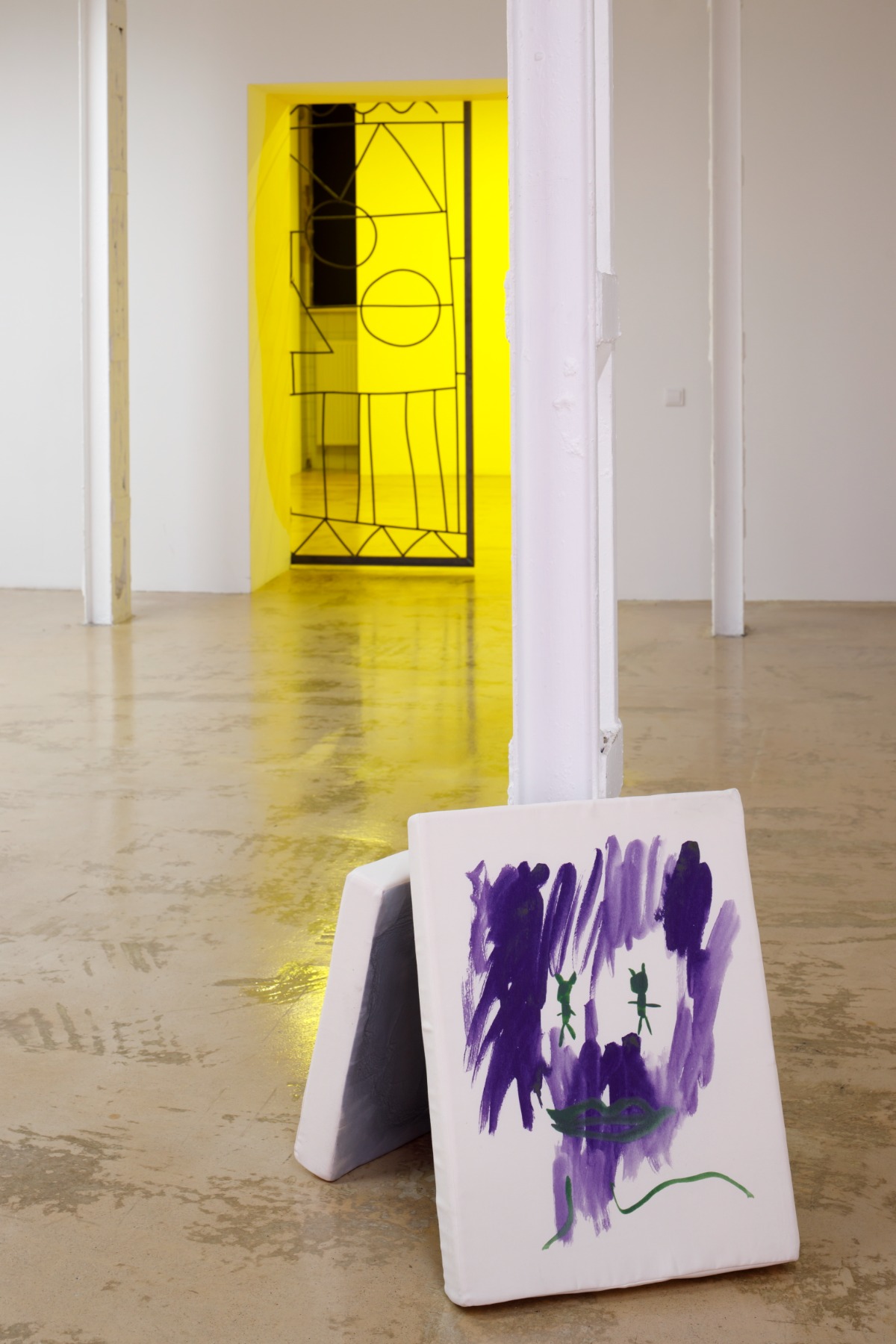
You have designed costumes for three productions by the director Inga Tropa (‘The Adder’s Bride’, ‘Expedition Joseph’, ‘Knives in Hens’). The subjects of these plays, broadly speaking, resonate with the ones you explore in your exhibition: kinship, sexuality, betrayal, searching inside the depths of one’s unconscious, etc. Would I be right to say that themes come to you on their own at a certain stage in your life and demand that you focus on them intently? If we direct our energy toward something, it starts to expand, so to speak?
That’s true – the more we pay our attention to something, the more it opens up. That’s very accurate. At some point I started to be pickier about choosing partners for my projects because it is important to me that the things that interest me do not get broken or reinterpreted in some way. I am happy that I promised myself I would only do things I believed in. I find that the issues that, I think, have been successfully highlighted by Inga are relevant not just for Latvia but also in the context of human evolution in general. We are the makers of our future. And today, more than ever, each of our thoughts and steps manifest themselves at astounding speed.
Title image: Evelīna Deičmane. Photo: Mārtiņš Grauds